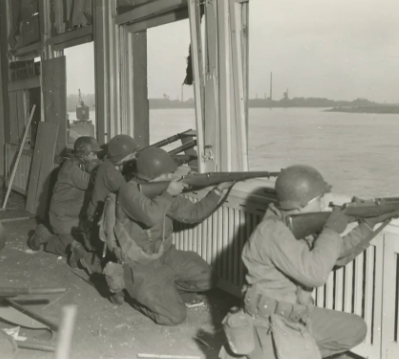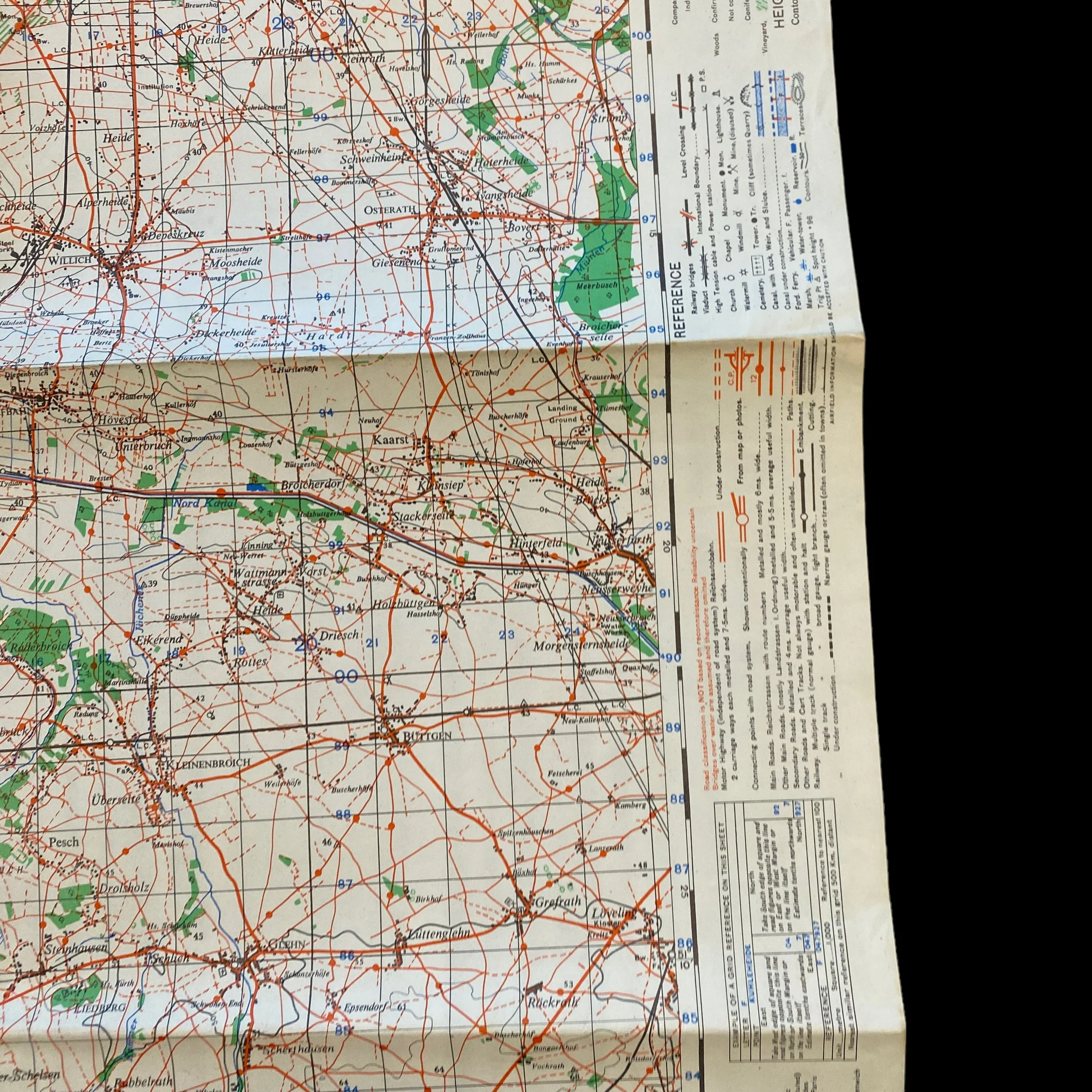WWII 1944 Allied KREFELD - UERDINGEN Rhine River Germany Infantry & Armored Division Combat Map*
























WWII 1944 Allied KREFELD - UERDINGEN Rhine River Germany Infantry & Armored Division Combat Map*
Comes with C.O.A.
This original and museum-grade World War II Allied “KREFELD - UERDINGEN” Rhine River map was published by the War Office in 1944 and was used during the Allied push through Germany and the advance on the Rhine River. This infantry map is updated with aerial revisions taken from previous Allied aerial reconnaissance missions in the area.
World War II was a cataclysmic event that reshaped the course of history, and the battles fought in Europe during this conflict were instrumental in determining its outcome. One of the pivotal phases of the war in Europe was the Allied advance towards the Rhine River, a natural barrier separating Germany from the western Allied forces. Krefeld and Uerdingen, two cities in North Rhine-Westphalia, Germany, played a significant role in this campaign.
Strategic Significance of Krefeld and Uerdingen
Krefeld and Uerdingen are neighboring cities located on the left bank of the Rhine River, approximately 30 kilometers northwest of Düsseldorf. Their geographical location made them vital targets for both the Allies and the Germans. These cities were part of the densely industrialized and heavily fortified Ruhr area, which produced a significant portion of Germany's war materials, including coal, steel, and chemicals. The Allies recognized that capturing these cities would not only disrupt German industrial production but also provide a stepping stone for crossing the Rhine River.
The Allied Push towards the Rhine
The Allied push towards the Rhine River was a multifaceted operation that involved several strategic objectives. These included weakening German industry, disrupting supply lines, and achieving a forward position for a potential Rhine River crossing. The campaign leading to Krefeld and Uerdingen was part of Operation Market Garden, which aimed to secure a bridgehead across the Rhine River in the Netherlands. The success of this operation was crucial for gaining access to the German heartland.
The campaign can be divided into two phases:
1. Airborne Assault and the Drive Towards the Rhine:
In September 1944, the Allies launched an ambitious plan to capture key bridges across the Meuse, Waal, and Rhine Rivers in the Netherlands. The goal was to create a corridor for the ground forces to advance swiftly into Germany. Krefeld and Uerdingen were on the route to the Rhine. British and American airborne divisions were tasked with securing the bridges while ground forces raced to reinforce them.
2. The Battle for Krefeld and Uerdingen:
Krefeld and Uerdingen found themselves in the midst of heavy fighting as Allied forces advanced towards the Rhine River. On September 19, 1944, elements of the British XXX Corps, led by General Horrocks, reached Krefeld and Uerdingen. The fighting in the urban areas of these cities was intense, as German defenders were determined to hold the line against the advancing Allies. The Battle of Uerdingen was particularly fierce, with house-to-house combat and fierce resistance. It took several days of hard-fought battles before the Allies could secure both cities.
The Outcome and Implications
The capture of Krefeld and Uerdingen marked a significant step in the Allied push towards the Rhine River. The successful advance in the Netherlands, culminating in the securing of the bridge at Nijmegen, had set the stage for this critical phase of the campaign. By capturing these two cities, the Allies not only disrupted German industry but also established a foothold on the western bank of the Rhine.
The capture of Krefeld and Uerdingen had several implications:
Disruption of German Industry: These cities were essential to the Ruhr's industrial production. By capturing them, the Allies disrupted the German war machine by crippling its supply lines and production capacity.
Strategic Positioning: The capture of these cities provided a strategically advantageous position for the eventual Rhine River crossing. The proximity to the Rhine allowed the Allies to plan and execute their crossing more effectively.
Moral Boost: Successes in Krefeld and Uerdingen bolstered Allied morale and indicated that victory over Germany was within reach.
German Resistance: The fierce German resistance in these cities, however, was a testament to the determination of the German defenders and foreshadowed the tough battles that lay ahead on the road to Berlin.
The Allied push towards the Rhine River during World War II was a complex and multifaceted campaign, with the capture of Krefeld and Uerdingen playing a pivotal role. These cities were not only crucial for disrupting German industry but also for positioning the Allies for a successful Rhine River crossing. The battles fought in and around these cities were fierce, underscoring the challenges of the campaign.
The successful capture of Krefeld and Uerdingen marked a significant turning point in the war, demonstrating the inexorable advance of the Allied forces towards Germany. The battles in this region were just one chapter in the larger narrative of World War II, but they serve as a testament to the strategic importance of seemingly ordinary cities during times of war.